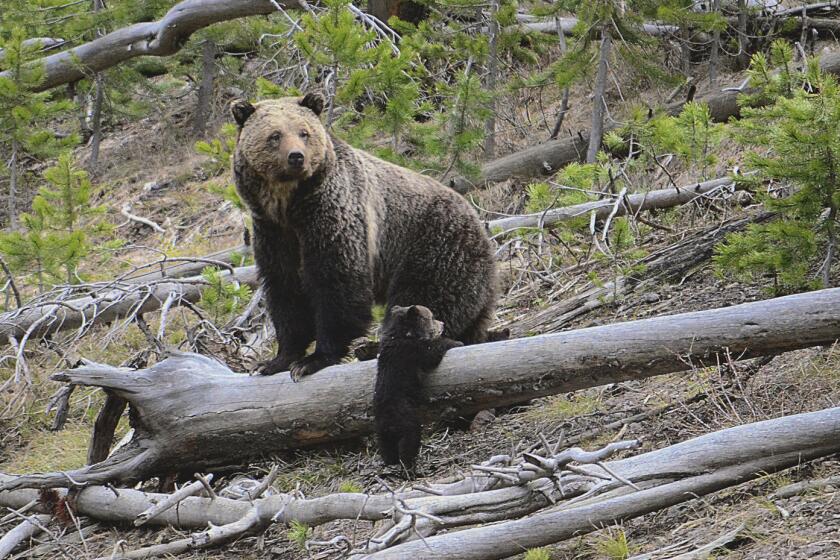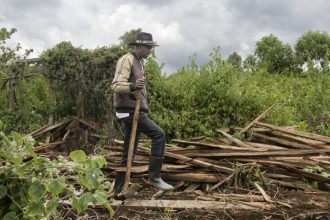A hiker who was attacked by a bear — probably a grizzly — in Yellowstone National Park this week has been released from the hospital.
The 29-year old man had been hiking alone on the remote Turbid Lake Trail when he apparently surprised the bear, according to park officials. While trying to use bear spray, he sustained “significant but not life-threatening injuries to his chest and left arm,” according to officials.
National Park Service medics responded to the scene, and the victim was able to walk with them to the trailhead, where he was loaded into an ambulance and taken to a nearby clinic. From there, a helicopter flew him to a hospital. He was released Wednesday.
As is true in the rest of the U.S., bear attacks are exceedingly rare in Yellowstone. Since the park was established in 1872, eight people have been killed by bears, according to the park’s website. For comparison, 125 people have drowned and 23 have died from burns after falling into hot springs.
Even seeing a grizzly bear is pretty uncommon in the lower 48 states. Prior to 1800, they were much more common, with an estimated 50,000 roaming the American West. But European settlers viewed them as a mortal threat to people and livestock and hunted them to near extinction, reducing their number to less than 1,000 in the contiguous U.S.
Thanks to recovery and conservation efforts in recent decades, the population has increased to nearly 2,000, mostly in Wyoming, Idaho and Montana, according to the U.S. Fish and Wildlife Service.
Still, the specter of a bear attack, especially by a grizzly, is enough to make most hikers’ blood run cold. While experts tell backcountry travelers to stand their ground and fight back if attacked by a black bear, the standard advice for years has been to lie down and play dead in the face of a much larger, more aggressive grizzly.
That advice has been updated lately, but not by much. A national parks website providing guidance on what to do says, “If you surprise a grizzly/brown bear and it charges or attacks, do not fight back! Only fight back if the attack persists.”
The hiker who was attacked on Tuesday told park officials he thought it was a black bear, but the location, behavior and size of the bear made park staff suspect it might have been a grizzly.
Discovery of an animal carcass near the attack, and confirmation that bear tracks found nearby were left by a grizzly, support that conclusion.
The trail has been closed indefinitely and rangers swept the area to make sure there weren’t any other hikers in imminent danger.
As for the bear? Parks officials say it was probably surprised too and merely acting in self-defense. So the park, “will not be taking any management action against the bear.”
Last year, Jon Kyle Mohr faced a similar encounter with a black bear in California’s Yosemite National Park.
He was less than a mile from the end of a 50-mile ultra-run he had started 16 hours earlier in Mammoth Lakes when he saw a huge black shape charging at him.
In an instant, he said, he felt “some sharpness” on his shoulder followed by a powerful shove that sent him stumbling in the dark. When he turned around, people about a hundred feet away were shining their headlamps in his direction and shouting, “Bear!”
It worked. The bear disappeared into the darkness and Mohr was left with torn clothes and a few scratches, but no more serious damage.
Asked how he felt about the experience, Mohr said he was incredibly shaken at first, and lucky it had happened near the Vernal Falls trailhead, one of the most populated places in the park.
But after a day or two to reflect, he had settled into a more zen frame of mind.
“It was just a really strange, random collision,” he said. “If I had rested my feet for 20 seconds longer at any point,” during the 16-hour run, “it wouldn’t have happened.”
This story originally appeared in Los Angeles Times.









